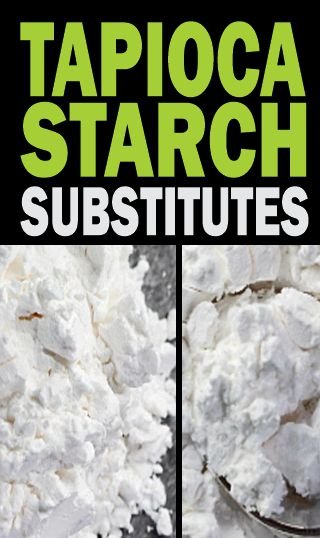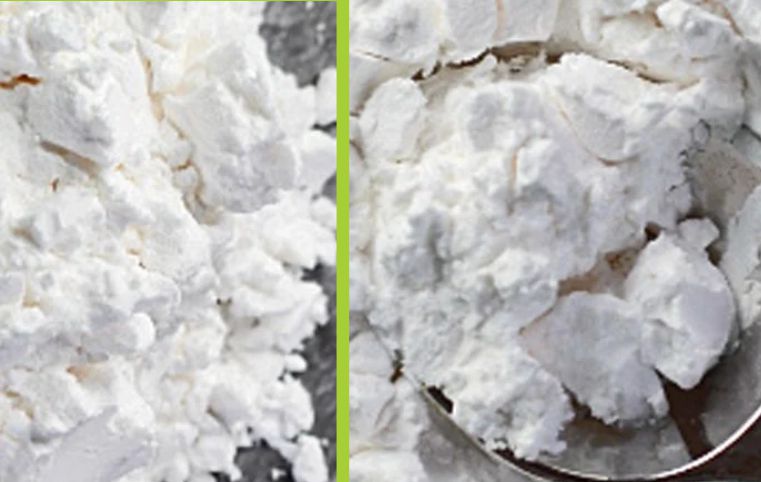Discover effective tapioca starch substitutes for your cooking and baking needs. This comprehensive guide explores alternatives like cornstarch, arrowroot powder, potato starch, and rice flour.
Learn about each substitute’s unique properties, ideal usage, and how to adjust recipes for optimal results.
Perfect for gluten-free cooking and accommodating dietary restrictions, this guide ensures your culinary creations remain delicious and high-quality without tapioca starch.
Related: Get Familiar with Modified Tapioca Starch
You might want to pin the image.

Table of Contents
- Introduction
- Common Tapioca Starch Substitutes
- Substitute Ratios and Adjustments
- Special Considerations on Tapioca Starch Substitute
- Frequently Asked Questions
- Conclusion
Introduction
The flexibility of tapioca starch having its source from cassava roots extends across many uses, from thickening soups and sauces to improving the texture of baked goods.
However, there may be occasions when tapioca starch is unavailable due to supply chain disruptions or a need to accommodate dietary restrictions.
In such cases, identifying reliable tapioca starch substitutes becomes important for both home cooks and professional chefs.
Finding these alternatives not only ensures the continuity of your culinary prowess but also expands the creative possibilities within your recipes.
This guide brings to you a variety of substitutes that can effectively replace tapioca starch without compromising the quality of your dishes.
Related: Where to Get Altered Tapioca Starch
Common Tapioca Starch Substitutes
When seeking alternatives to tapioca starch, some substitutes can serve as effective replacements, each with its unique properties, uses, and adjustments needed in recipes.
Let’s take a closer look:
1. Cornstarch
Cornstarch is a popular tapioca starch substitute due to its common availability and similar thickening capabilities.
It is particularly effective for thickening sauces and soups. However, cornstarch forms a more opaque mixture, unlike the clear finish tapioca starch provides.
When substituting, use an equal amount, but be mindful that excessive heat may cause the cornstarch to lose its thickening potency.
Related: Is Cassava Starch the Same with Tapioca Flour?
2. Arrowroot Powder
Arrowroot powder presents another tapioca starch substitute, especially for those seeking a gluten-free option.
Known for its clear and glossy finish, arrowroot is ideal for acidic sauces and frozen dishes since it does not break down under freezing conditions.
To substitute, use one tablespoon of arrowroot powder for every tablespoon of tapioca starch called for in the recipe.
However, avoid using arrowroot with dairy-based recipes as it can form a slimy texture.
Related: Industry Trends of Tapioca Starch
Potato Starch
Potato starch is a good tapioca starch substitute that works well in baking and frying. It provides a similar consistency to tapioca starch but tends to be heavier.
Potato starch should be used in a 1:1 ratio as a substitute. One downside is that it may alter the flavor of delicate dishes, so it should be tested in small quantities first.
3. Rice Flour
Rice flour is another tapioca starch substitute, particularly useful in baking. While it does not offer the same cohesiveness as tapioca starch, it can be combined with other gluten-free flours to achieve the desired consistency.
When using rice flour, start by replacing half the amount of tapioca starch and adjust as needed. Its neutral flavor is a plus, but it may take longer to cook.
4. Wheat Flour
Wheat flour is a readily available tapioca starch substitute, suitable for those not adhering to a gluten-free diet. It provides a similar thickening effect but lacks the sheer texture of tapioca starch.
When substituting, use two tablespoons of wheat flour for every tablespoon of tapioca starch.
Note that wheat flour requires longer cooking to eliminate the raw taste and can alter the appearance and flavor profile of the dish.
Related: How to Use Tapioca Starch as Thickener
Substitute Ratios and Adjustments
When substituting tapioca starch, it is pertinent to choose the correct ratios and make necessary adjustments to ensure your recipes turn out as intended.
Different alternatives possess unique properties, and understanding these nuances can help maintain optimal texture and consistency.
Cornstarch: Cornstarch is a common substitute for tapioca starch. Utilize a 1:1 ratio, ensuring equal amounts in weight or volume.
Cornstarch is an excellent thickener but may require longer cooking times to eliminate its raw taste. For instance, in sauces, bring them to a boil to activate their thickening properties.
Related: Tapioca Starch is Different from Tapioca Flour
Potato Starch: Potato starch can be substituted directly on a 1:1 basis as well. It is a potent thickener but tends to break down under prolonged high heat. Therefore, add it towards the end of your cooking process when preparing dishes like soups or stews, to retain its structure.
Arrowroot Powder: Arrowroot powder is another viable option and should be used in a 1:1 ratio. It is particularly effective in acidic sauces and can be used as a thickening agent in fruit fillings or jams. Note that this substitute provides a glossy finish, enhancing the appearance of your dishes.
All-Purpose Flour: Utilizing all-purpose flour as a substitute requires a different approach. Since it is less potent, use 2 tablespoons of flour for every 1 tablespoon of tapioca starch. The flour will thicken as it cooks, but be vigilant about whisking to avoid clumping, ensuring a smooth consistency.
Related: How to Make Boba Pearls without Tapioca
Special Considerations on Tapioca Starch Substitute
When substituting tapioca starch, it is advisable to consider how each alternative affects flavor and texture in various recipes.
Each substitute has unique properties that can influence the outcome of your dishes. For instance, cornstarch is an effective thickening agent for soups and sauces.
However, it might impart a slightly different taste compared to tapioca starch, particularly noticeable in recipes with delicate flavors.
While potato starch is a viable option that works well in baking, providing a light and airy texture to cakes and pastries.
However, it can yield a somewhat denser result compared to the lightness typically associated with tapioca starch.
Related: Understanding the Resistant Tapioca Starch
Also, while arrowroot powder serves as an excellent thickener, it breaks down more quickly under prolonged heat, making it less suitable for recipes requiring extended cooking times.
Rice flour, a common gluten-free option, can also be used. However, it may give baked goods a grainier texture, necessitating experimentation to achieve the desired consistency.
When addressing dietary needs, especially for individuals avoiding gluten, it is critical to check product labels for cross-contamination risks.
For those focusing on low-glycemic diets, alternatives like coconut flour can be explored, although it alter the flavor profile significantly due to its distinctive coconut taste.
Related: Types of Chemical Modification of Tapioca Starch
Frequently Asked Questions
What can I use instead of tapioca starch?
You can use cornstarch, potato starch, arrowroot powder, or rice flour as substitutes for tapioca starch in various recipes.
Is tapioca starch the same as cornstarch?
No, tapioca starch comes from cassava root, while cornstarch is derived from corn. They have different properties and uses in cooking.
Can I replace tapioca flour with rice flour?
Yes, rice flour can be used as a substitute for tapioca flour, but it may alter texture, especially in gluten-free baking.
Is cassava the same as tapioca?
Cassava is the root from which tapioca is extracted, but tapioca refers specifically to the starch derived from cassava.
Conclusion
This guide on tapioca starch substitutes explores practical alternatives like cornstarch, potato starch, and arrowroot powder, each offering distinct benefits.
Flexibility in experimenting with substitutes allows for creativity and innovation in cooking and baking.
By adapting recipes and using suitable alternatives, you can achieve the desired results without compromising quality.
Whether thickening or baking, these substitutes provide versatile solutions, ensuring success in the kitchen even when tapioca starch is unavailable.
This guide empowers you to make informed choices, helping maintain the integrity of your dishes while embracing resourceful culinary approaches.
References:
- https://www.tiktok.com/channel/substitute-for-tapioca-flour?lang=en
- https://panhandlemilling.com/the-ultimate-tapioca-flour-baking-and-substitute-guide/

Chimeremeze Emeh is a writer and researcher passionate about Africa’s most transformative root crop—cassava. Through his work at cassavavaluechain.com, he explores the entire cassava industry, from cultivation and processing to its diverse applications in food, health, and industrial use.
He also writes for palmoilpalm.com, where he shares his extensive experience and deep-rooted knowledge of palm oil, covering red palm oil, palm kernel oil, and refined products. His work there reflects his lifelong connection to agriculture and his commitment to promoting sustainable value chains in Africa.
Driven by curiosity and purpose, Chimeremeze aims to shed light on how cassava continues to empower communities, strengthen food systems, and link traditional farming wisdom with modern innovation.

